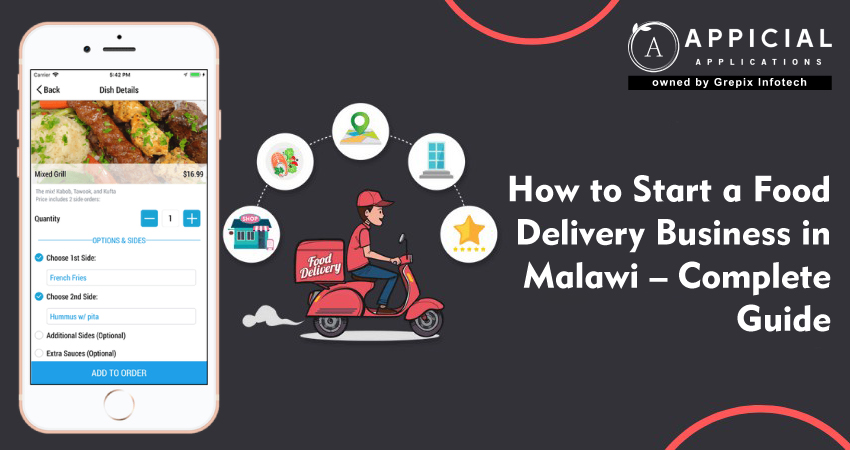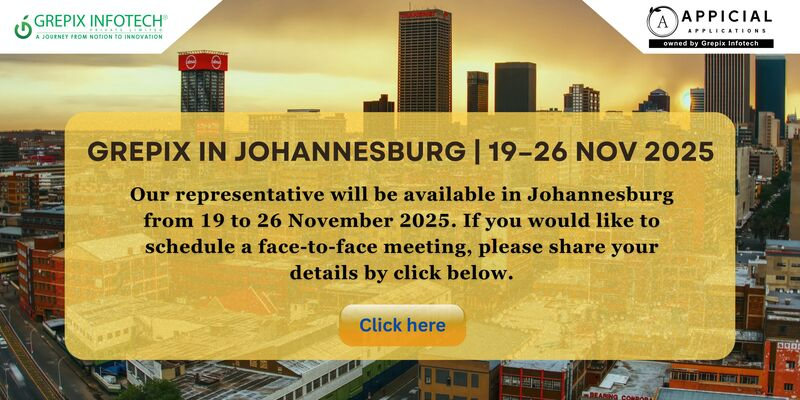
How to Start a Food Delivery Business in Malawi – Complete Guide
Picture this: it’s a Friday evening in Lilongwe. Offices close, traffic thickens on Kamuzu Procession Road, and students at Chancellor College settle down for group study. Some want pizza, others want nsima with beef stew, and a few crave fried chicken. But none of them feels like going out. This is where a Food Delivery App steps in.
Malawi, often referred to as the “Warm Heart of Africa,” is experiencing rapid changes in how people live and consume services. Smartphones are everywhere. Mobile money is no longer new. And convenience is turning into a daily demand, not just a luxury.
The restaurant scene is expanding, too. From big chains like KFC to local joints serving chambo, Malawians are spoiled with choices. Yet, the delivery market is still in its early days. Most people call a boda rider directly or wait hours for food because there’s no proper system. That’s an opportunity.
Starting a food delivery business here is less about copying Grubhub Delivery or Uber Eats Delivery and more about creating a model that blends Malawian realities with global best practices.
The food delivery sector in Malawi is on the rise as more people embrace digital convenience. This blog explores why investing in a Food Delivery App makes sense, the essential features to include, the technology behind it, challenges unique to Malawi, projected costs, and how Appicial can help launch scalable platforms. Case-based insights, market trends, and practical steps make this a complete roadmap for entrepreneurs.
Why Invest in Food Delivery App Development in Malawi?
Why now? That’s the real question.
- Smartphone penetration is rising. Even in smaller towns like Mzuzu, affordable Android devices dominate. Social media use is proof that digital adoption is strong.
- Middle-class spending is growing. Young professionals in Lilongwe or Blantyre don’t mind paying for convenience if it saves time.
- Mobile money adoption is high. Airtel Money and TNM Mpamba have removed the fear of online payments. This is huge for scaling a Food Delivery App.
- The restaurant ecosystem is diverse. Fancy hotels, small cafes, and roadside vendors all can plug into one platform.
Imagine this: if only 10% of urban households in Lilongwe used an Online Food Delivery App twice a week, the market could cross $5 million in transactions annually within just two years. That’s not a distant dream.
What are the Must-Have Features for a Food Delivery App?
A good app doesn’t just connect restaurants and customers. It builds trust. In Malawi, trust is everything.
Customer Side
- Easy sign-up. Nobody wants a 10-step process.
- Menu browsing with photos. Seeing chombo fish or peri-peri chicken makes a difference.
- Real-time order tracking, even if GPS updates are slightly delayed.
- Payment options: mobile money first, cash second, cards optional.
Restaurant Side
- Simple menu upload. Most local eateries don’t have IT teams.
- Order notifications with sound alerts (many owners use basic smartphones).
- Sales reports, weekly summaries help even small restaurants understand growth.
Rider Side
- GPS-based routing, optimized for Malawi’s road networks.
- Earnings tracker, including motivation increases when riders can see daily totals.
- SOS button for emergencies (road safety can’t be ignored).
Global apps like DoorDash Food Delivery App or Uber Eats Delivery thrive on these features. Locally, the design must be lightweight. The best Food App Development Company will strip away the heavy graphics to make sure the app works smoothly on budget phones.
What is the Technology Stack and Architecture?
Let’s get slightly technical. A strong Food Delivery App relies on three apps talking to one backend system.
- Frontend: Flutter or React Native for smooth cross-platform apps.
- Backend: Node.js or Python Django. Both handle real-time orders well.
- Database: PostgreSQL or MongoDB for fast order histories.
- Payments: Airtel Money and Mpamba APIs. Absolutely essential.
- Cloud hosting: AWS, but local server backups are wise because internet interruptions happen.
Think of it as three doors to the same house: one for the customer, one for the restaurant, and one for the rider. All connected.
What are the Challenges and Market Gaps in Malawi?
Here’s where reality hits. It won’t be smooth sailing.
- Internet costs are high. People will uninstall an app if it eats data.
- Delivery roads are tough. In the rainy season, even parts of Blantyre get muddy. Rider logistics matter.
- Consumer habits. Many still like to “see the food” before buying. Overcoming this trust barrier will take consistent service.
- Restaurant onboarding. The small eatery at Area 23 doesn’t know how to upload menus. Training becomes part of your role.
But gaps are golden. Where there is a gap, there is a chance to lead. A DoorDash Delivery App-like solution, localized, could dominate urban Malawi in less than 5 years.
What is the Estimated Development Cost & Timeline?
Money matters.
- Basic MVP: $20,000–$35,000. Takes about 3–4 months. Covers core ordering, menus, and delivery tracking.
- Mid-level build: $40,000–$60,000. Around 6 months. Adds promos, push notifications, and ratings.
- Full-scale platform: $70,000–$100,000+. 8–12 months. Includes AI-driven food suggestions, loyalty programs, and advanced dashboards.
Projections suggest that with just 15,000 active monthly users, monthly revenue could hit $60,000 from commissions, delivery fees, and premium ads. Within 2–3 years, break-even is realistic.
How Appicial Applications Can Help?
Launching in Malawi is different from launching in New York. That’s where Appicial comes in.
As a Food App Development Company, Appicial builds custom platforms that:
- Run smoothly on low-data networks.
- Integrate Airtel Money and TNM Mpamba natively.
- Offer a scalable design, you can start in Lilongwe, then expand to Blantyre, Mzuzu, or even Zomba.
- Provide rider apps that track fuel usage and earnings, small but critical details in Malawi.
- Support restaurants with training tools and easy dashboards.
In short, Appicial doesn’t just Create Food Delivery App solutions. They help entrepreneurs Build Food Delivery App businesses that last.
Conclusion
Malawi is ready. The question is- who will step up first?
Urban demand is rising. Restaurants want reach. Customers want convenience. Riders want income. A smart entrepreneur who adapts the Grubhub food delivery or DoorDash food delivery model to Malawi’s context could set the foundation for the Best Food Delivery Platforms in the country.
It’s not about copying. It’s about localizing. With the right partner like Appicial, the journey from an idea to a scalable business is faster than most think.
FAQs
Author's Bio

Vinay Jain is the Founder at Grepix Infotech and brings over 12 years of entrepreneurial experience. His focus revolves around software & business development and customer satisfaction.
Back to blog list





